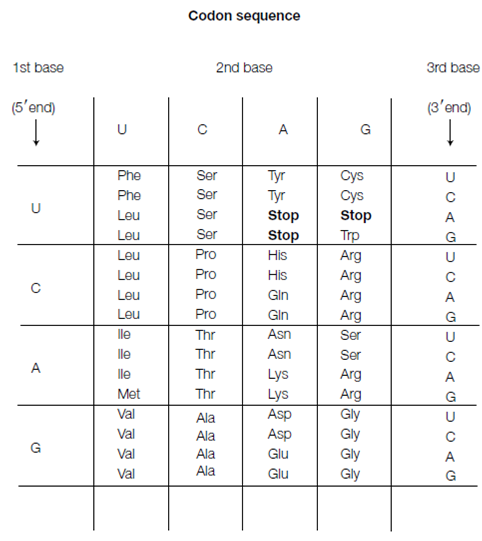Genetic code is degenerate:
Because RNA is composed of four kinds of nucleotides, there are 43 = 64 possible codons, which is 64 possible triplets of nucleotides with various sequences. Moreover, only 20 amino acids are generally found in proteins so which, in most cases, a single amino acid is coded for through several different codons described in the figure. The genetic code is therefore said to be degenerate. In reality, only methionine and tryptophan are represented by a single codon. As a conclusion of the genetic code's degeneracy, a mutation which modifies only a single nucleotide in

Figure: The genetic code.
DNA point mutation, and therefore changes only a single nucleotide in the corresponding mRNA, frequently has no effect on the amino acid sequence of the encoded polypeptide.
Codons which specify the similar amino acid are known as synonyms. Most synonyms differ only in the third base of the codon; for instance GUC, GUA, GUU, and GUG all code for valine. In During protein synthesis, every codon is recognized through a triplet of bases, known an anticodon, in a specific transfer RNA molecule. Every base in the codon base couples with its complementary base in the anticodon. Moreover, the pairing of the third base of a codon is less stringent than for the first two bases example for there is some 'wobble base pairing' so in which in some cases a single tRNA should base pair with more than one codon. For instance, phenylalanine tRNA, that has the anticodon GAA, recognizes both of the codons UUC and UUU. The third position of the codon is therefore also called the wobble position.